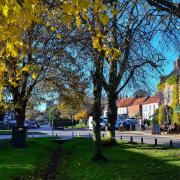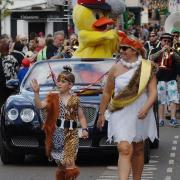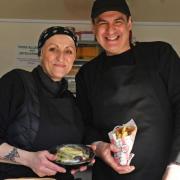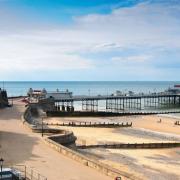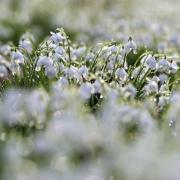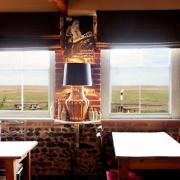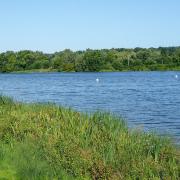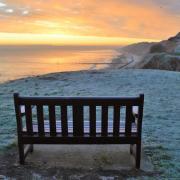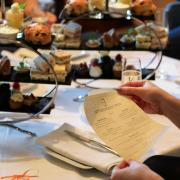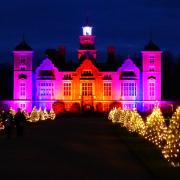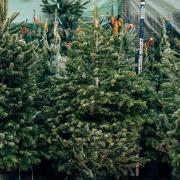Saint and sinners, roses and roads – rounding up nine fascinating facts about Attleborough

1. Everything is coming up roses
Roses fill three acres of the gardens and nursery which is part of the legacy of world-renowned rose expert Peter Beales. They hold more than 100 species of classic rose - some saved from extinction by Peter, who was born and brought up in Norfolk and devoted much of his life to preserving wild and historic roses. He also created 70 new varieties, wrote books and lectured around the world. Today the family nursery sells more than 1,000 types of rose and holds the national collection of old roses. The delightful display gardens are open daily, for free.
2. Saints and angels (and a devil's ditch)
Attleborough church tower was once topped by a spire - which soared magnificently towards the heavens for 400 years before collapsing around 1700. The spire-topped Norman tower was also once at the centre of a cross-shaped floor-plan but the arm of the building used as a college for priests was demolished centuries ago. Centuries before this, in the 850s, St Edmund is said to have spent a year in the ancient Saxon church which once stood here, learning from priests before being crowned king.
Another of the church's treasures was also almost lost. The spectacular rood screen is the longest in East Anglia and one of the most beautiful in the country. During a restoration in 1842 it was about to be sold to a Norwich antique dealer - but the Bishop refused to allow the sale and the church had to take its screen back - but stored it away for a century. Today it is back in its rightful place, watched over by medieval wall-paintings of throngs of angels.
But it is not all about saints and angels - a marble memorial stone set in the floor commemorates a Captain John Gibbs who died in 1695. It calls him: "So good a husband, father, brother, son, as few have equalled, none has ever outdone." But he was also famous as a gambler who once wagered he could drive his carriage and four horses up and down the deepest part of the Devil's Ditch on Newmarket Heath - and won a fortune by succeeding with a custom-made carriage.

3. Keeping the roads well repaired and signed was important in Attleborough
Stones from the priests' college, destroyed during Henry the VIII's devastating dissolution of the monasteries, were used to repair the Attleborough to Buckenham road. A century later England's first turnpike road was constructed between Attleborough and Wymondham.
It would have had long sticks, or pikes, which were turned aside when a fee had been paid to fund road repairs. And on Station Road one of only a few Crimean War monuments in Britain, commemorating the peace of 1856 and sacrifice of local men, doubles as a milestone inscribed with distances to nearby towns and villages.
4. Sport
An impressive sporting heritage includes footballers John and Justin Fashanu, who went to school in Attleborough in the 1970s, and legendary racing driver Ayrton Senna, who lived here for several years in the 1980s.

5. Pubs and rogues
In the town centre the Griffin Hotel has been serving customers since the reign of Elizabeth I. Not every customer of the pub was quite as happy to be there as its modern guests. Prisoners on their way to court hearings in Thetford were once chained overnight in the cellars - and inspired so much interest that traders set up a fair which became known as Attleborough Rogues Fair. Another Attleborough pub was run by the notorious Kray twins in the 1950s.
6. Party town
Attleborough's biggest party of the year is its Party on the Park music festival, this year on July 6. And the following day is Attleborough Carnival Day. Decorated floats, vans, trailers and walking groups join the town centre procession, and the carnival also includes entertainment on the recreation ground behind Connaught Hall.
7. Cheers for ciders and beers
For 99 years home-grown Gaymer Cider was a huge employer in the town. Although it has closed, the remaining orchards in South Norfolk's cider country do not go to waste, with cider still made nearby, including in Banham and Carleton Rode. And beer is brewed here too. Wolf Brewery started out on the old Gaymer's site and expanded to nearby Besthorpe with beers including Granny Wouldn't Like It and Wolf in Sheep's Clothing.
8. Vikings
A gold brooch, worn by one of the richest women in the land more than 1,000 years ago, was discovered at Attleborough. It is now on display at Norwich Castle as part of the exhibition Viking: Rediscover the Legend. The intricate brooch is thought to have been made in Scandinavia before being brought to England and is the only one of its kind to have been found in this country. This was a time of waves of invasions, rampagings and pillaging by Vikings from Denmark. The town council website is less than complimentary stating: "If local records are correct, nothing but disaster was brought to Attleborough by the Danes, and it took the coming of William the Conqueror to restore some sense of well-being to the area."
9. Besthorpe's spelling mistake
The neighbouring village of Besthorpe has a host of history, including once-moated Old Hall and New Hall which is actually more than 400 years old, was built for the family who gave their name to Drury Lane in London and has its own tilting ground - once used for jousting. Less chivalrously, there is also a road called Sluts Hole Lane - although this is said to be a Victorian spelling mistake for Slutch (an Old English word for slushy or muddy).
A 1999 residents' petition to ditch the sluts was unsuccessful.




